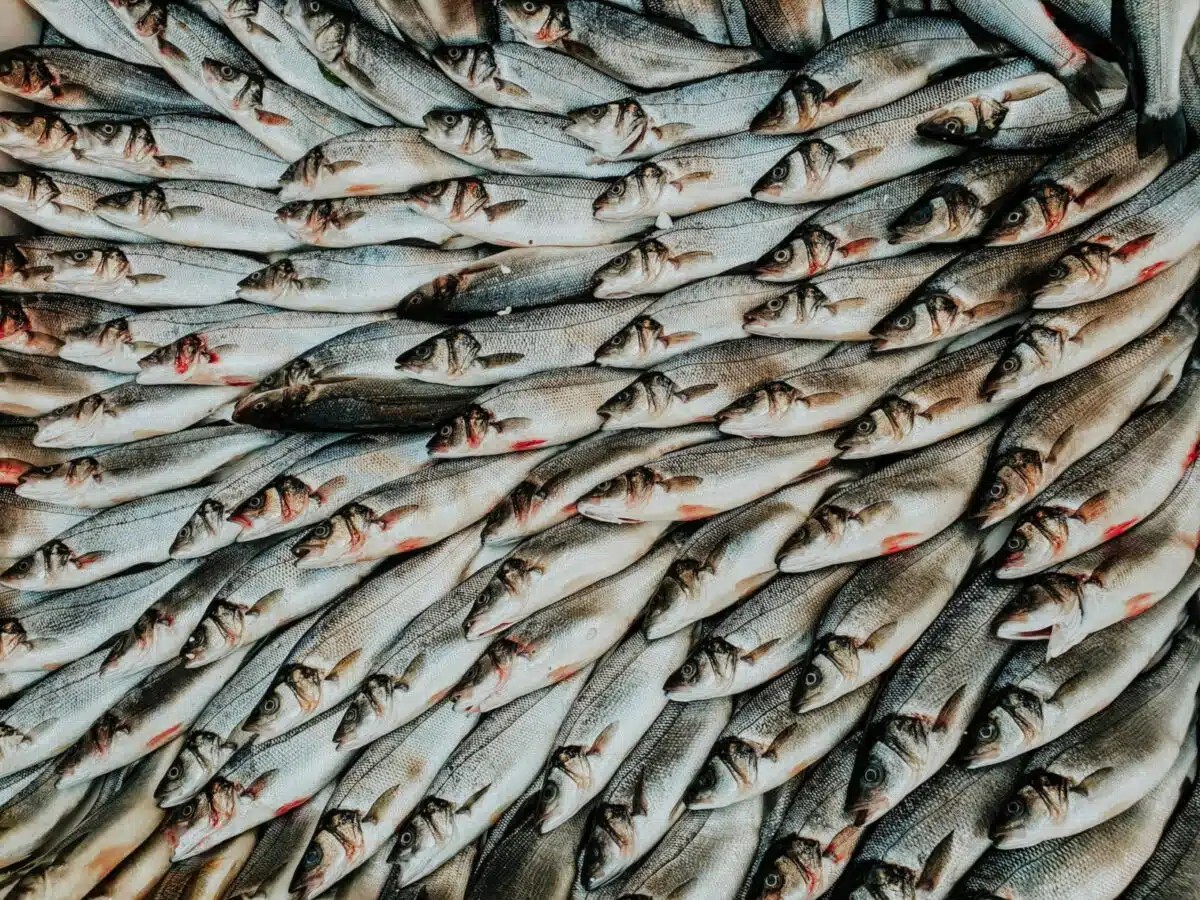The Mullet Fish belongs to the group of ray-finned fish in the Mugilidae family. They are also known as Grey Mullets because of their color. This family of fish has more than 78 species. They occur in temperate, subtropical, and tropical waters worldwide. Moreover, the majority of mullet species are found in coastal marine waters.
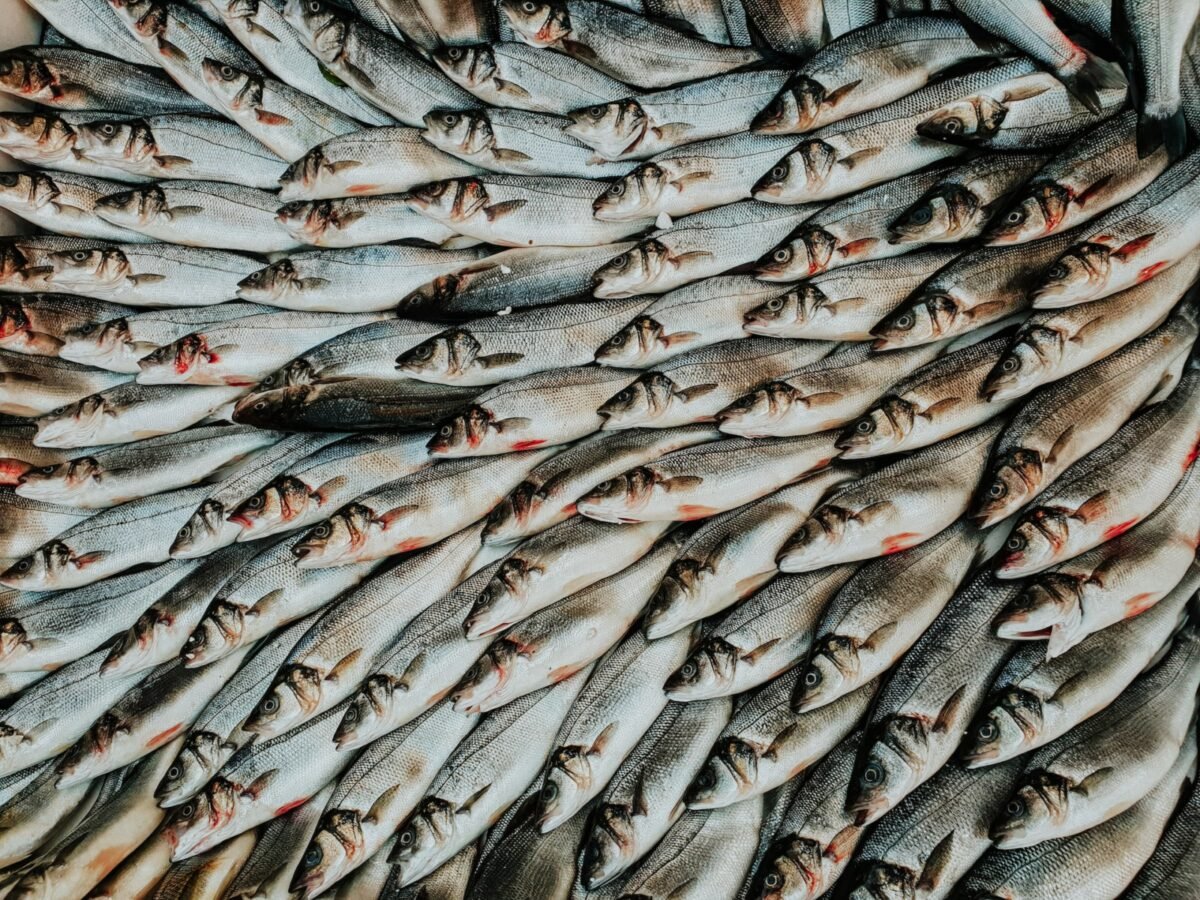
However, this species is also often spotted in rivers, estuaries, bays, and inlets. Mullets like lakes with muddy or dirty bottoms. Thus, they inhabit areas with abundant food at depths of up to 400 feet. Humans have consumed mullets for thousands of years. The growing demand for their meat has resulted in the decline of some mullet species.
Geographical Distribution:
The striped mullet is widely distributed in warm temperate and tropical coastal waters. It can be found in the western Atlantic Ocean, including the Gulf of Mexico, but is not present in the Bahamas and the Caribbean Sea.
The eastern Atlantic Ocean is home to striped mullets from South Africa to the Bay of France. The Black Sea and Mediterranean Sea also constitute their habitat. The eastern Pacific Ocean range extends from southern California to Chile and houses a large number of mullet fish.
Scientific Classification:
The Mugiliformes order only contains one family, the Mugilidae. In some cases, the Perciformes order is used to classify them. As you can see, the proper method to define this fish family is up for debate.
Regardless, they are members of the Actinopterygii class. This includes all fish with ray fins, which have bone rays to support their fins. Furthermore, mullets belong to the Chordata phylum and kingdom Animalia.
Appearance:
The exterior of Mullet Fish is silvery or gray. Along with many of the species’ different names, it is reflected in the family’s common name. Additionally, they possess large, muscular physiques, making them one of the most popular fish to catch or hunt.
Mullets have a small mouth and two dorsal fins. They have four spines, or rays, on their front dorsal fin. It places them in the same class as other ray-finned fish.
Body Structure:
The mullet has a circular, tornado-like head and a long body. They have blunt noses, small heads, and sharp teeth. Moreover, the lips are small, with a bulge at the lower lip’s tip. Its pectoral fins are too short to reach the first dorsal fin.
The second dorsal fin is located beyond the origin of the anal fin. Moreover, the lateral line is not clearly visible in these fishes. Instead, the number of anal ray fins allows us to identify the specific type of mullet fish. The white mullet has nine fins, while the striped mullet has eight. Plus, the striped mullet’s eyes have scattered brown coloration, which distinguishes it from the White Mullet.
Coloration:
It has blue-gray or olive-green scales on its body, and they are large and located on the upper margins and back of the fish. On the abdomen and lower sides, the scales turn silvery in color. It is referred to as a “striped mullet.”
There are big, black cores to the scales on the sides. Therefore, they appear as black, horizontal lines.
Size, Age and Growth:
The mullet can grow to be more than two feet long. They typically measure between 2 and 3 pounds in weight, although documentation shows that they can weigh up to 6 lbs. Furthermore, they have a life expectancy of 4 to 16 years, and a young mullet reaches maturity at about three years old.
There are higher growth rates along Florida’s gulf coast from west to east. It usually happens because of a temperature rise. Additionally, most of the growth occurs in the spring and summer. Females grow more quickly in comparison to males of the same age.
Life Cycle:
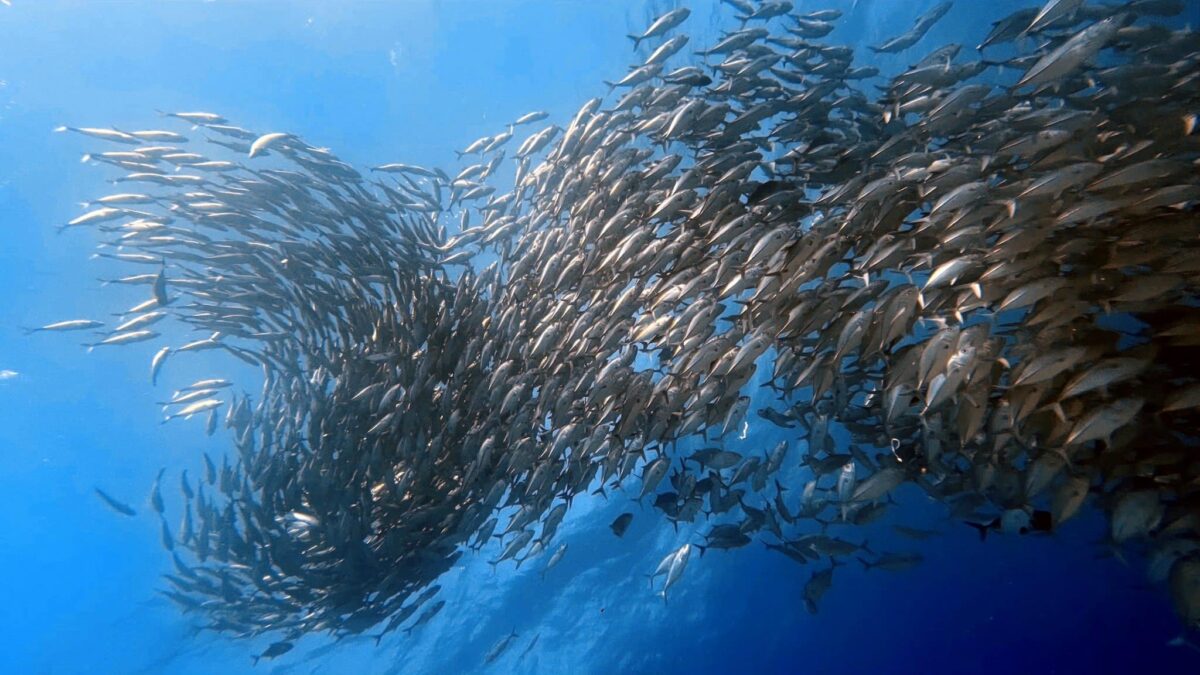
Mullets lay eggs in water having higher salt concentrations. After hatching, the larvae migrate to the coast. Moreover, the juvenile mullets then live in water with less salt. Later, they go to freshwater areas to grow into adults.
In Florida, adults start to breed in early fall, from October to January. Then, they migrate to waters with higher salt concentrations to release the eggs because they cannot lay eggs in low-salt waters.
Reproduction:
Mullet Fish are catadromous. They reproduce in seawater but then live their entire lives in freshwater. Furthermore, large groups of adult mullets go far offshore to breed, usually in the fall and winter.
Fecundity per female is thought to range between 0.5 and 2 million eggs. Females mature sexually in their fourth year. Slightly later in comparison to males, which reach sexual maturity at age three. Females must be at least 31 to 34 cm long to begin breeding.
Mating:
The male and female striped mullets slowly swim into the river to mate. The males approach the females and encircle them. Then, they knock them during the escort. External fertilization occurs, and then the eggs are dispersed.
Additionally, geographical factors also affect the mullet’s mating season. Even though there are many eggs, very few survive and hatch because there are so many sea predators.
Development:
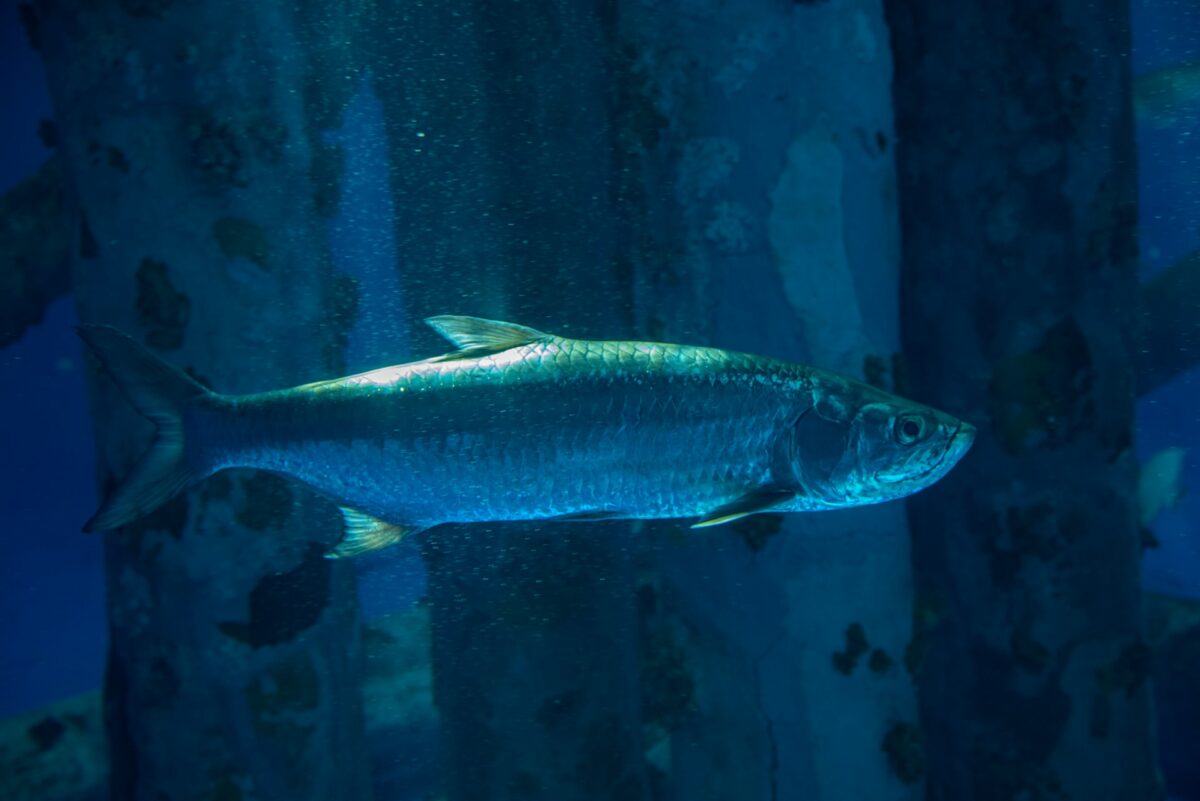
The eggs of the mullet fish are lightly golden and shiny. They have a 0.72 mm average diameter and are spherical. There is an oil globule inside every egg, which gives it a positively uplifting quality. Moreover, about 48 hours after fertilization, the egg begins to hatch. It discharges larvae that are 2.4 mm long.
The larvae lack paired fins and a mouth. They are roughly 2.8 mm in length at 5 days old. The fin buds start to form, and the jaws become clearly defined. The larvae migrate to inshore seas when they are 16 to 20 mm long. When they reach 50 mm, they are classified as juvenile.
Food Habits:
Plankton, algae, and plants are the favorite foods of mullets. In addition, they absorb the flavor of their environment. So, the mullet is not edible if it swims in dirty waters. They’re also referred to as “bottom feeders.”
The lower jaw of mullets is curved like a spade that helps them to scrape stuff from rocks. Additionally, they collect debris from the ocean floor. They separate digestible plants and animal matter with their teeth and gill rakers.
Predation:
Amongst the primary predators of mullets are large fish, aquatic animals, and birds. The spotted seatrout consumes up to 13.8 to 35 cm long mullet as food. Furthermore, sharks frequently munch on huge mullets off the coast of Florida.
Pelicans, dolphins, and seabirds are some other predators of striped mullets. Humans frequently catch them and are also major predators of striped mullets.
Behavior:
Mullets frequently jump out of the water, which is a distinctive activity. Moreover, there are two different kinds of jumps. One involves making a clean, straight cut out of the water to avoid predators. The second leap is a lower, slower one that involves a sideways spin. The latter produces a bigger, more recognizable splash. The causes of this smaller jump are debatable. However, some people think that they do it to obtain oxygen-rich air. Afterward, gas exchange takes place in a little organ above the pharynx.
Distinctive Features of Mullet Fish:
Here is a list of distinguishing features that mullet fish possess:
- Jumping:
Mullet Fish is also known as the “happy” or “jumping” mullet. It’s because they bounce across the water’s surface while swimming. They frequently jump out of the water due to excitement.
The mullet rises to the surface and emerges from the water. By doing this, the body of the mullet will receive more oxygen. Mullets are more likely to jump when they are in oxygen-poor water. Additionally, the mullet can move very quickly.
- Striped or Black Mullet:
The striped or black mullet lives in warm coastal marine waters. In ancient Rome, the Nile River was overflowing with this fish.
Furthermore, Hawaiian island native chiefs were huge fish fans. To cultivate mullet fish, they had ponds constructed. This fish has also been referred to as the “flathead” mullet.
Mullet in Fishing and Cooking:
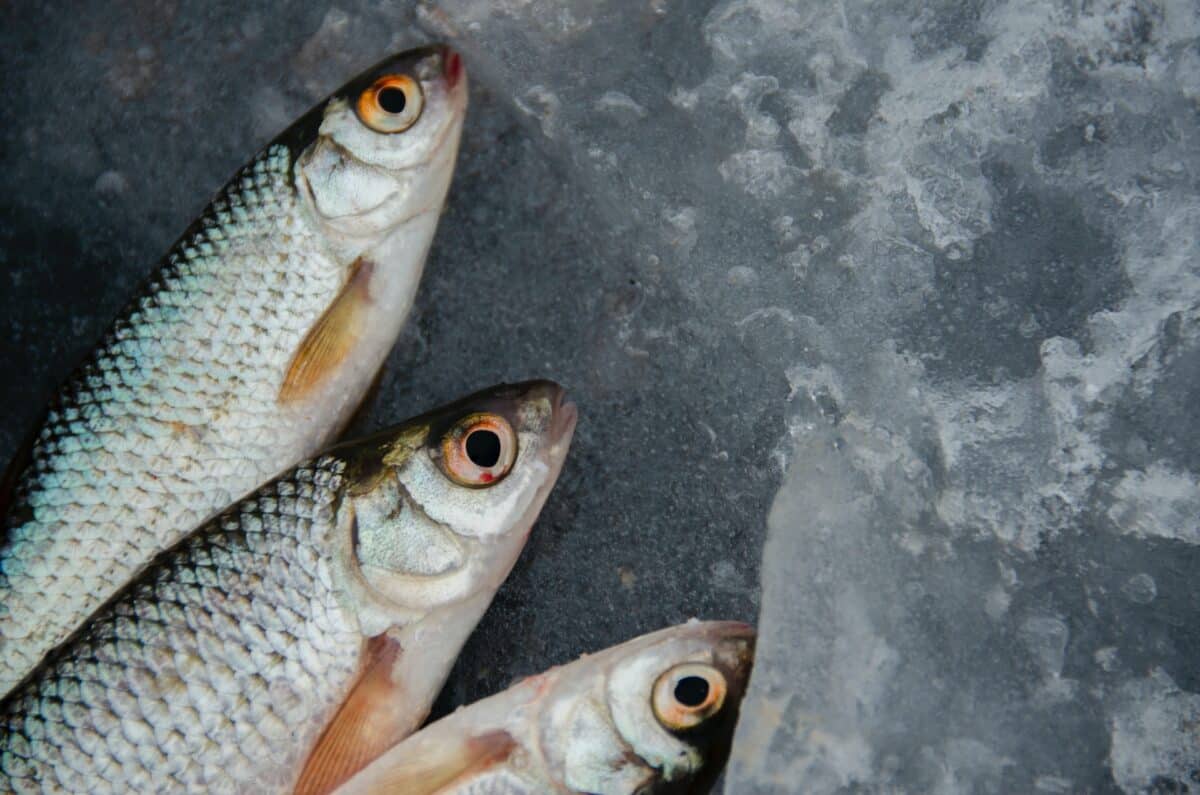
These fish are widely used in both cooking and fishing. They usually remain on the surface and grow rapidly. So, in comparison to certain other ocean fish, they are relatively simple to catch since you don’t need any additional equipment to catch them.
Mullets never attain the enormous size of certain other tropical fish, but they produce hard filets because of their powerful, muscular bodies. They have a strong taste and an oily texture.
How To Cook Mullet Fish:
Using a fish fry is among the best ways to prepare mullet. Apply a coating and binding agent to the fish, then fry it in oil. This is a simple method for cooking mullet.
To match your specific tastes, you can flavor the fry. Furthermore, the mullet will keep its shape well when you grill it. When cooked properly, it becomes soft and crispy. It is a very delicious and nutritious food.
Different Methods to Cook Mullet:
· It is salted, smoked, and dried.
· You can eat mullet fried, baked, or canned.
· It is a great idea to use mullet in stews and soups.
· You can microwave, sauté, grill, broil and steam it.
· Marinate it to use in salad.
· Add it to pasta.
· It is best to grill or broil it with lime butter and seasoning salt.
Read up on 5 Fish Your Taste Buds Would Thank You For!
Health Benefits of Mullet fish:
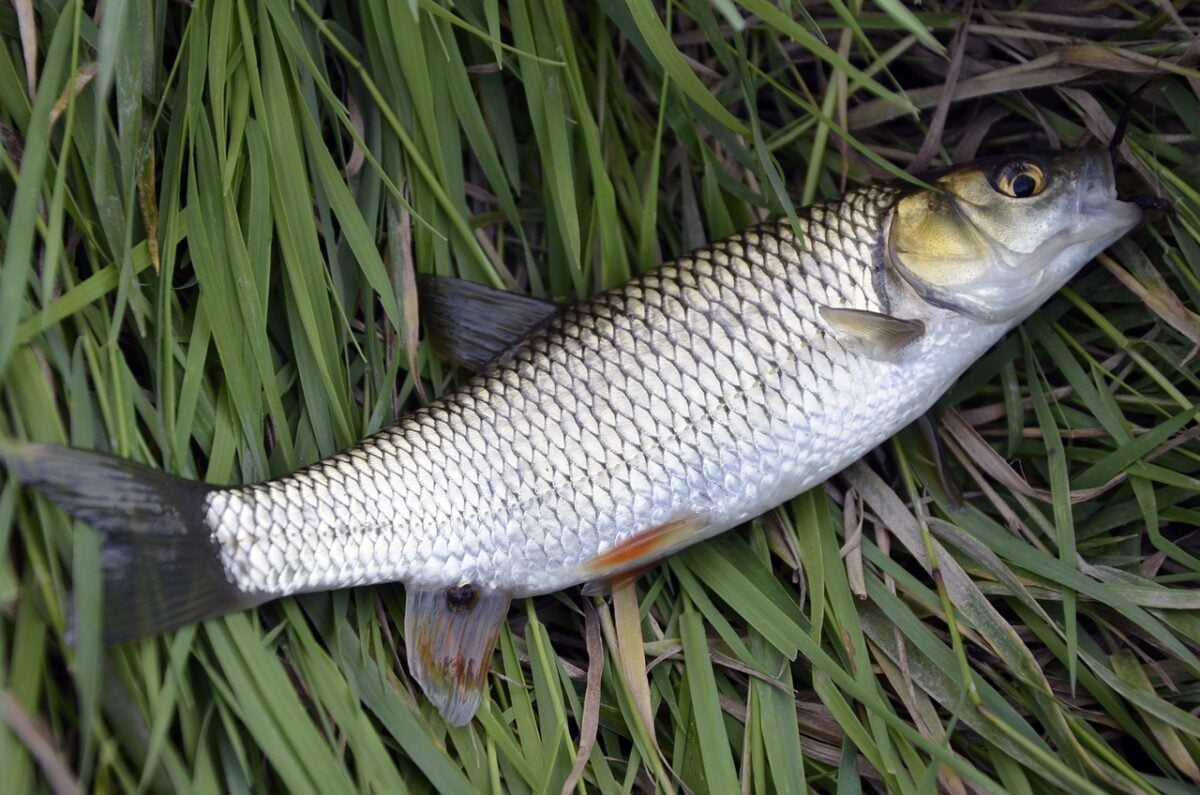
Along with a great taste, Mullet fish holds many health benefits. Some of them are as follows:
- Full of Essential Nutrients:
Mullet is a rich source of many healthy nutrients. They help the body meet its daily dietary requirements, and mullet may also increase one’s appetite. Mullet is rich in vitamins, particularly vitamins A, PP, and B1. Additionally, Omega 3 fatty acids are abundant in mullet fat, which the body needs to function normally. One of omega 3’s most essential roles is to defend against arteriosclerosis. These nutrients lessen the chance of heart attacks and strokes. Moreover, they lower blood pressure and keep arteries clean. Try to eat this fish at least twice every week as part of your diet.
- A Great Source of Energy:
The mullet’s carbohydrate content is a powerful source of energy. This could fulfill the body’s regular dietary requirements as the body’s metabolic activities depend heavily on carbohydrates.
Mullets also contain fat, protein, and carbohydrates. Therefore, eating mullet will help to regulate your metabolic processes.
- Skin and Hair Health:
Mullets contain a lot of fatty acids. This is necessary for healthy hair and skin. Additionally, it stops cracking and maintains the shine and health of your skin and hair.
- Help Wound Healing Quickly:
Mullet’s protein content is beneficial for accelerating wound healing. Protein helps to regenerate cells in the body. This, in turn, helps in the quick recovery from any injury.
Major Micronutrients Present in Mullet Fish:
Mullet is full of various micronutrients essential for good health. These include:
- Iodine:
It helps to keep your thyroid healthy. Iodine improves the nervous system and fulfills energy requirements. Furthermore, it supports kids’ growth. Therefore, it is highly beneficial to add Mullet fish to your diet.
- Omega 3:
The omega-3 fatty acid helps your heart function normally. It keeps blood pressure and overall health normal. Essentially, eating mullet will keep you safe from serious health disorders.
- Selenium:
It helps protect your cells from free radical harm and assists your immune system. Reduced tiredness and fatigue is another perk. Plus, it promotes healthy hair.
Economic Importance for Humans:
The striped mullet is considered a superior meal fish. Moreover, they serve as bait for a number of fish, including billfish. As bait, it frequently fetches a higher price than food. The roe of this fish is highly desirable, and the roe of striped mullet is sold fresh. In contrast, the fish are also sold dry, salted, and frozen. Chinese medicine also makes use of this fish. Many other parts of the world value it highly as a commercial fish.
How to Catch Mullet Fish:
You can catch mullets using tiny treble hooks or cast nets. Here are some methods to catch mullet fish easily:
- Catching Mullet on Hook and Line:
If you want to hook and line fish, you must be cautious and quiet. Mullet fishing is the real test of technique. To get the mullet comfy and fed, think about pre-chumming a location. Additionally, reduce your hook size – because they have large eyes and little mouths.
Test out several natural and synthetic baits. Seek the most effective fishing methods. Mullets barely hunt and typically graze on plants, and as a result, fancy bait won’t work to catch them. Avoid moving or twitching your bait. Keep the rod tip still, do not jerk it.
- Catching Mullet on Rod And Reel:
Avoid stiff, strong rods, even if you want extra sensitivity. Hooks will come out as a result and will also cause light lines to break. Furthermore, a mullet has a tiny, sensitive mouth, making hooks easy to remove.
You have a better chance of getting good hookups with a multi-hook mullet setup. It allows catching several mullets from the same area at once. Utilize polarized eyewear to locate the mullet and prepare your approach. Moreover, avoid utilizing loud gasoline engines to come closer.
Best Time to Catch Mullet:
The mullet run is the best time of year to capture them. Large groups of mullet travel to breeding grounds in coastal waters. The dawn and dusk hours are ideal for mullet fishing.
Mullets are very active early in the morning and late at night. However, don’t underestimate daytime mullet fishing – sunlight sometimes makes it a lot simpler to see feeding mullets.
Final Thoughts:
The Striped Mullet is one of the most easily recognizable species because of the body’s horizontal black stripes. Its body is anteriorly curved and cylindrical. Additionally, mullets eat tiny marine particles like bacteria and plant material.
The majority of mullet species are found in coastal marine waters. However, they are occasionally spotted in rivers or bays. Furthermore, mullet is a fish with firm white meat that you can grill or fry. They have been a staple of the human diet since ancient times.
Also have a look at the Pollock Fish.
Join our Forum for free today!


